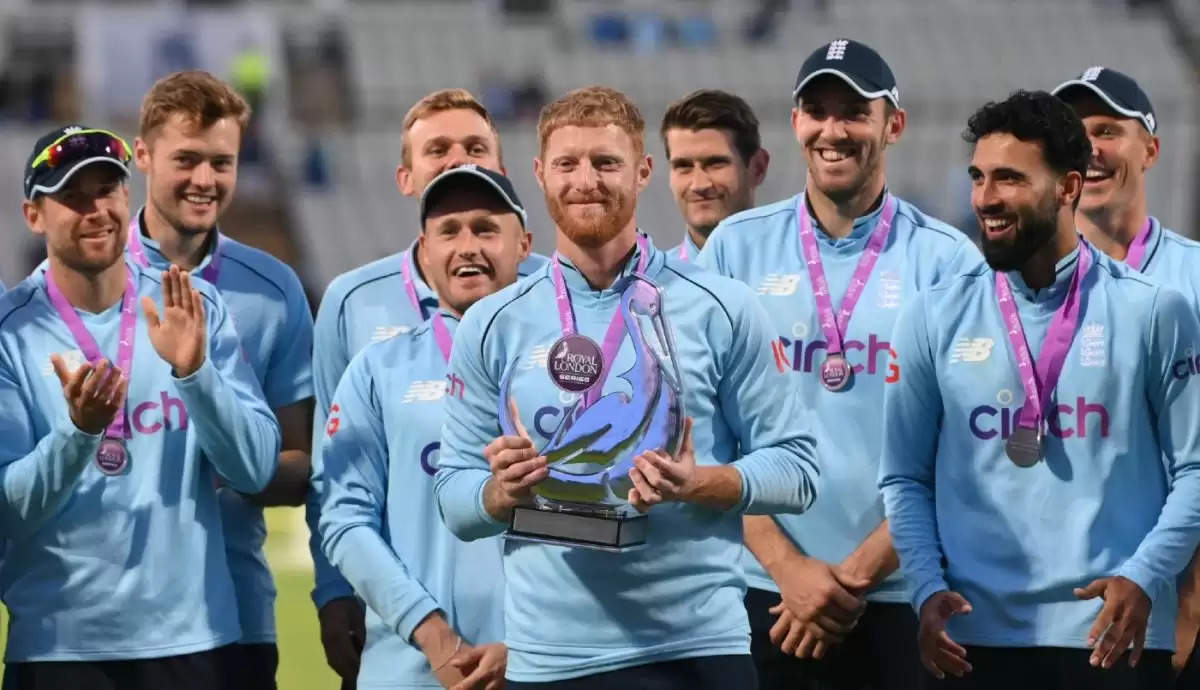The rise and rise of England

They failed to make it to the knockout stages of the 2015 World Cup and played a brand of white-ball cricket that could at best be labeled as shambolic. Six years down the line, as Pakistan’s Shaheen Shah Afridi ran in to bowl the last ball of the 48th over, world champions England were on the verge of something spectacular. And as the bowl pinged off Brydon Carse’s bat through wide long-off, a triumphant arc in England’s cricketing history was complete. Time had healed all wounds.
Cricket in the past couple of years has tried its best to avoid the macabre touch of Covid. The PSL and IPL cancellations served as stark reminders of the impossibility of it all. The international arena was speckled with cases popping up even in the most restrictive of bio-bubbles. So when the England camp surfaced seven cases on the eve of the series against Pakistan, it was met with a sense of inevitability. The board, however, was quick to act, naming a fresh eighteen-man squad captained by Ben Stokes. That included nine uncapped players. Let that sink in. England managed to completely overhaul their white-ball side, recalling the coach from his time off. And they did this overnight. And then the 11 they selected managed to comprehensively defeat Pakistan, often branded a “mercurial” team. Such is the caliber waiting in the English wings.

Well, how did England get here? For starters, Eoin Morgan turned out to be more of a philosopher than a captain. The whole team is a giant billboard for “go big or go home”. Not a single player takes guard or runs up to the bowling crease sans intent. But intent is a tricky beast to tame. Try too hard and the stumps shatter or try too little and draw the ire of fans and commentators alike, not to mention the pressure from within. Somehow, England found players with intent that could actually execute at the highest levels (think Jos Buttler, Jonny Bairstow, Jofra Archer among others). This took a calculated setup and years of pipelining. England invested heavily in their white-ball setup domestically, cropping up a lot of players that are limited-over machines. It, however, came at the price of their Test cricket dominance. The current team remains a shadow of the ones lead by Andrew Strauss and Alastair Cook. But, hey, who wouldn’t trade the mace for a World Cup?
Another vital cog in this setup was Strauss himself. During his reign as the Director of Cricket for England from 2015-2018, the cricketing elite warmed up to the domestic leagues. Gone were the days of Kevin Pietersen or Dimitri Mascarenhas being “rebels“ for playing in the IPL. Domestic T20 leagues were embraced with open arms and contracts. The leagues were flooded with English List-A cricketers who used them to hone their skills against varying oppositions, changing conditions. The result? Well, just look at Islamabad United’s Phil Salt, who smashed a blistering half-century in the second ODI against Pakistan. Or maybe James Vince, posterchild of the Multan Sultans, whose masterful century sealed the clean sweep for England. Their exposure to the PSL could only have helped. And they wouldn’t fare too badly in Australia either.
The last piece of the puzzle has been the monumental ascendancy of England’s bowling attack. Quality spinners like Adil Rashid and Moeen Ali hunt in conjunction with workhorses like Mark Wood and Archer. And they can all bat too, making the team a tail-less beast. The reserves are full of like-for-like replacements, such as the electric Saqib Mahmood and zippy Carse. Having spent a lot of time in the reserves since his 2020 ODI debut, all Saqib needed was this one series being the spearhead. And how he shone. It was pure, test match bowling in colored clothing. And what of Carse, claiming a five-wicket bag in only his third ODI, bending his back every ball. The likes of Gregory and Overton played their destined parts too. It all augurs exceptionally well for the upcoming generation of English fans.
That full-strength England would grind SL to dust was a foregone conclusion. But, how would their B team fare against an eternally unpredictable, yet full-strength Pakistan? As it turns out, they would bundle their opposition out for a measly 141 in the first ODI, defend a sub-par 247 in the second and chase down a record 332 in the last. All this with their most experienced player, captain, and all-rounder Ben Stokes bowling five overs and scoring 54 runs. Such is the astonishing and scary depth in English cricket. The T20 World Cup is theirs for the taking and so is the next World Cup. And the one after that. This has the feeling of the early days of a cricketing dynasty. Their players look ready. Are the fans?
Also Read: ECB confirm unique set of playing conditions for The Hundred

